Text
Frodo Didn’t Fail
The climactic scene of The Lord of the Rings, when Frodo and Sam reach the Cracks of Doom, is one of my favorite scenes in all of literature. So I was very interested a little while back when noted Tolkien scholar Stephen Colbert laid out a neat little analysis of the scene. Frodo seems to fail at his appointed task – rather than throwing the ring into the fire, he claims it for himself, and the ring is only destroyed by the coincidental intervention of Gollum. Colbert then notes that Gandalf should have known that Frodo would fail. Back in the second chapter, Frodo demonstrated to Gandalf his inability to throw the ring into the much cooler fires of his own hearth, after having only possessed the ring for a few hours. Therefore, one may assume, Gandalf must have intended for one of the other members of the Fellowship to intervene and ensure the ring’s destruction.
Colbert’s analysis is clever, in the same way that the theory that Gandalf had intended all along to use the eagles to reach Mordor is clever. In its cleverness, though, I think such analyses risk treating LotR as a D&D campaign and thus losing sight of the real literary themes of the story.
One of Tolkien’s key themes is the Augustinian view of evil. Most genre fiction takes a decidedly Manichean view of evil – a view that holds that evil and good are two great opposing forces in the world, like the light and dark sides of The Force. In a Manichean view, good must triumph by opposing evil, either to eradicate it or to restore a balance to the universe.
Manichean views of evil lead to a very common type of climax to stories: the contest of wills. Our hero confronts the villain, and through superior courage, grit, love, or what-have-you, they overcome the villain and their evil power. It’s Harry going wand-to-wand with Voldemort, Thomas Covenant laughing at Lord Foul, Meg breaking IT’s hold over Charles Wallace, Luke facing down Vader and Vader facing down the Emperor.
Any other writer could have given us a very typical Manichean Cracks of Doom scene. Frodo approaches the fire, and the ring’s temptation overtakes him. He puts the ring on and begins to claim it. But a tiny voice somewhere deep inside him insists that this is wrong. Sam cries out, and thinking about Sam’s love and devotion rekindles a spark in Frodo. His Hobbitish desire for food and good cheer wells up, and he tears the ring off and throws it into the fire. A dramatic ending and a nice echo of the moral of The Hobbit.
But that’s not what happens. Frodo’s goodness – even the innocent goodness of a little old Hobbit – can’t go toe-to-toe with Sauron’s evil. Indeed, Isildur proved it. He defeated Sauron by opposing him with the force of good, and defeated him. But Isildur couldn’t destroy the ring, and within the year it had destroyed him.
Tolkien holds instead to an Augustinian view of evil. Evil, according to St. Augustine, is not a force of its own, but rather is the absence or corruption of good. We see this most explicitly in the idea that Morgoth and Sauron can’t create anything of their own, but only corrupt and warp what has been created by others. We also see it when Gandalf and Galadriel describe what would happen if they took the ring – it would warp their own desire to do good until they became evil.
An Augustinian climax can’t involve a contest of wills between good and evil. In an Augustinian world, evil can only exist by leeching off of good. So evil must be given an opportunity to destroy itself, much like the self-defeating band of thieves described by Plato (on whose philosophy Augustine drew heavily). Good wins by renouncing evil, not by overcoming it.
And that’s exactly what happens at the Cracks of Doom. The ring isn’t destroyed because Frodo’s force of good overcame the ring’s evil. Nor is Gollum’s intervention a coincidence or deus ex machina (like the series of disarmings that happened to make Harry the master of the Elder Wand). Rather, the ring’s evil collapsed in on itself by drawing Gollum. The very corruption of Gollum that enabled the ring to escape the river drove him to wrestle desperately with Frodo for it and ultimately fall to his doom, ring in hand.
An Augustinian view of evil has definite moral implications, which are also shown throughout The Lord of the Rings. A Manichean world is a consequentialist world. To defeat the forces of evil, we need to think strategically. Sometimes we may even need to indulge in a little short-term evil in order to be able to achieve the greater good. But an Augustinian world can’t allow that kind of pragmatic approach. In an Augustinian world, any compromise with evil can only strengthen it, giving it an infusion of good that delays its self-destruction. An Augustinian world demands a deontological ethic, doing the right thing regardless of the outcome.
Again and again in The Lord of the Rings, we see that strategically pursuing the greater good fails, while remaining true to moral principles succeeds even when it looked foolish. On the cautionary side, we have Saruman and Denethor. Though they may point to the palantir as an excuse, they each ultimately made a thoroughly reasonable choice in the face of Sauron’s overwhelming advantage – to ally with him while playing the long game, or to give in to despair. Our heroes, on the other hand, repeatedly make foolish decisions based on hope. Aragorn is a good example – he decides to pursue Merry and Pippin because he owes them protection even though Frodo is the one who holds the fate of the world in his hands. Later, he decides to make a suicide attack on the Morannon rather than hunkering down in Minas Tirith, in the hopes of Frodo’s quest succeeding.
But the most important instance of doing the right thing despite the consequences comes from Frodo himself: he refuses to kill Gollum. Killing Gollum would have been an eminently reasonable idea – he’s a slinker and a stinker, and we know that he never redeemed himself or turned over a new leaf. Indeed, his main accomplishments were to lead Frodo and Sam into a death trap, then to try to kill them with his own hands at the Cracks of Doom. Both Sam and Faramir were right when they said that killing Gollum would have been a good idea!
But Frodo showed Gollum pity and spared his life because it was the right thing to do. And just like Gandalf could see Frodo’s unwillingness to destroy the ring back in Bag End, he also addressed this very issue. He instructed Frodo:
Frodo: It’s a pity Bilbo didn’t kill him when he had the chance.
Gandalf: Pity? It was pity that stayed Bilbo’s hand. Many that live deserve death. Some that die deserve life. Can you give it to them, Frodo? Do not be too eager to deal out death in judgment. Even the very wise cannot see all ends. My heart tells me that Gollum has some part to play yet, for good or ill before this is over. The pity of Bilbo may rule the fate of many.
And in the end, that pity was what saved the world. Frodo’s pity made it possible for Gollum to be there at the Cracks of Doom to take the ring. Frodo refused to give in to the small, reasonable evil of killing Gollum, and so he left the great evil of the ring exposed to destroy itself. That was Gandalf’s backup plan, not Aragorn’s strength to take the ring and destroy it. And so Frodo didn’t really fail. He succeeded at his quest back when he saved Gollum’s life, when he did the right thing even though it seemed foolish.
24K notes
·
View notes
Text
Okay I know we always go on about Marvel’s uncanny casting ability.
But if you thought they were the only ones, let me draw your attention to this man:
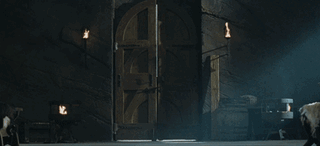
Viggo Mortensen, aka Aragorn son of Arathorn, aka Sexiest Ranger in Middle Earth
would hike, often for more than a day, to remote filming locations, in costume, for the sake of authenticity
was the best swordsman Bob Anderson (swordsmaster/instructor for LotR, Pirates of the Caribbean, etc) says he has ever trained
occasionally writes poetry (more book!canon than film!canon but um hello)
does all his own stunts
lived all over and speaks about 23940209384 languages
you know that scene at the end of Fellowship when he’s fighting the Uruk-hai? And one throws a dagger at him and he hits it away with his sword? Yeah, the guy who threw it was supposed to miss, but accidentally threw it directly at Viggo. Who just casually Aragorned and hit it away.
They actually cast Aragorn to play Aragorn
168K notes
·
View notes
Link
I’ve written a new blog post.
1 note
·
View note
Photo
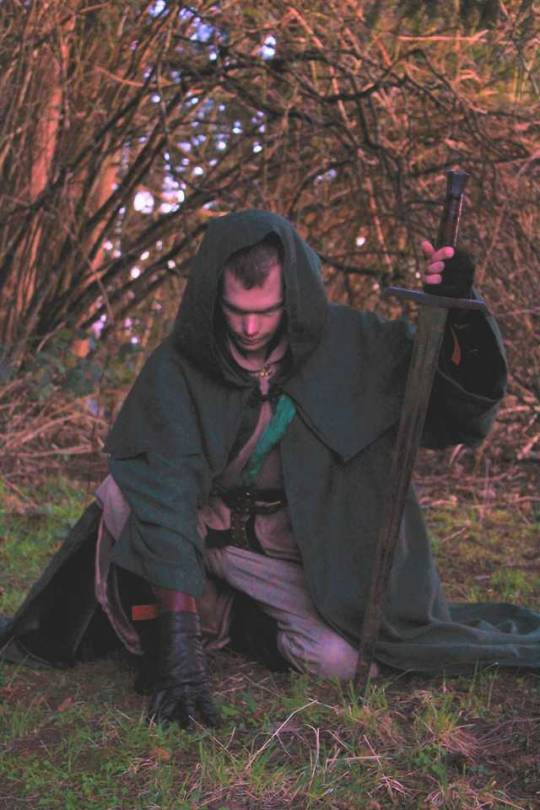
My ranger cosplay is finished.
1 note
·
View note
Photo

A new fantasy map of a world I've been building since I was 10.
0 notes
Text
I'm strongly considering writing an 8 page comic to take to cons and such. If only that didn't take so much work.
1 note
·
View note
Photo

some parries against overhand strikes commonly found in rondel treatises, 15th century
5K notes
·
View notes
Text
Being a realist is tough.
I am a realist. A realist is someone who, when going into any scenario, event, or decision, weighs the options and says "This is what's likely going to happen, so I'll this." It's very logical and scientific. The problem is that most people don't think that way. Most people say, "Oh, no, the worst is about to happen, let's do this!" Which is completely based on speculation. The great thing about being a realist is that it eliminates a large amount of worry.
1 note
·
View note
Link
The @kickstarter for the relaunch of Exploring Comics is now live! Help spread the word!
14 notes
·
View notes
Link
The @kickstarter for the relaunch of Exploring Comics is now live! Help spread the word!
14 notes
·
View notes
Photo

We have a twitter now for my game. Follow me!
1 note
·
View note
Text
promoting your webcomic
someone messaged me asking for advice on promoting your webcomic and i thought it might be useful to others as well, so here are some pointers! disclaimer, this is just based on my personal experience over the last couple of years, different things work for different people etc.
never shut up about it
if you follow me on twitter, you’ll know that i talk about inhibit all the time. i like to share page wips and character drawings with my readers, but occasionally someone might stumble across them and check out the comic. i make an announcement on twitter and tumblr every time i post a new page, and then bump it a couple of times throughout the day to make sure people dont miss it*. i’ll post an illustration with a link to the comic saying “hey have you read this lately”. at the end of a scene or chapter, i’ll post a link letting people know that it’s a good time to catch up or jump on board. just talk about your comic! don’t put it down! don’t say things like “here’s my comic, it’s not very good but please check it out” because i guarantee i wont!!!! if you dont think it’s good, why should i care about it? you’re your own publicist, so dont hold back!! but also dont spam oh god!!!!! find a happy medium!!!!!!!!
*if youre going to make update announcements, include a link to the comic and some sort of teaser image! make people want to click through! i usually use a panel from that day’s page.
figure out what social media works for you
when i first started inhibit, i posted update notifications on facebook, twitter, and tumblr. i slowly realised facebook wasnt working for me; the view-to-click ratio wasnt worth the effort. so i ditched it and decided to stick solely to twitter and tumblr. you have to find where your audience is and go to them; dont expect readers to make a tumblr account just to follow your blog for news.
engage with readers
you dont have to be everyone’s best friend, but replying to readers’ comments on the site or answering their questions on social media is a nice way to build your audience’s loyalty. it’s always nice to get feedback on something youve worked on, and from a reader perspective, it’s nice to know the creator of a thing you like isnt a jerk! if someone shares fanart with your or just messages you to let them know theyre enjoying the comic, thank them! retweet or reblog it! maybe it’ll encourage someone else to check out your work!
link your comic everywhere
if a potential new reader cant easily find a link, theyre not going to read your comic. very few people will actively search out a hidden link. put it in your tumblr description, your twitter bio, your blog sidebar, your facebook page, whatever, plaster it everywhere. make it super easy for casual readers to find.
participate in community events
there are lots of weekly twitter hashtags where comic creators answer a series of questions and discuss aspects of comic-making. #comicbookhour, #comictalk, and #webcomicchat are just a few of them. in your introduction tweet at the start of every event, put a link to your comic, a brief description, and at least one promotional image or page from your comic. make it easy at a glance to understand what your comic’s about and what it looks like!
if you’re hosting your site on something like comicfury and smackjeeves, get involved on the forums and meet people that way!
things like inktober and hourly comic day are a great way to get involved in the creative community too, ive found a lot of new artists (and therefore, their comics too!) this way. make friends, support each other, be nice; webcomics is a small community. we gotta stick together.
make guest art for other comics
if you have a friend who makes a comic, why not offer to do guest art for them? i absolutely love guest art for two reasons: one, i get to draw something cool for a pal whose work i enjoy. two, free advertising!! and don’t forget to return the favour and let them do guest art for you!
link to other comics
one of my favourite ways to promote other people is to include a link to their work on a “comics i recommend” section of my site. this can be a section on the sidebar or a separate page (mine’s on the extras page) and i personally love checking out comics recommended by people whose work i enjoy. this isn’t really a “how to promote your comic” tip; unless you do a link exchange or something, you cant guarantee someone will put your comic on their site. it’s just a nice thing to do, and it’s nice when someone does link to you! i dunno! i like promoting my friends!!
make a mirror site
if you’re hosting your own site, the only visitors you’re going to get are ones you funnel there yourself. a good way to grow your audience is to upload your comic on a mirror site that has a built-in audience, like webtoon*. this is a great way to tap into a huge market of new readers with very little effort. every time you update, your comic gets bumped to the top of a “just updated” feed, and readers can subscribe for updates so your comic will appear in their list of favourites. ive found mirror sites a great way to connect with readers who might never have found the comic otherwise! however, these sort of sites are very “sticky”; it’s very hard to redirect readers away from these sites onto your main site. still, be sure to include links to all your other social media; i usually include mine at the bottom of each update.
*make sure you know your audience. i originally put inhibit on webtoon as full pages, just like on the main site. however, most webtoon readers use the mobile app, so i adapted the entire comic into a mobile format. i immediately got a lot more readers. i definitely recommend sticking to a panel-by-panel format if you’re going to mirror there! plus, when you hit certain page view milestones, they pay you!
put your comic on TopWebComics
topwebcomics is a site where users can vote daily for their favourite webcomics. stick your comic up there (be sure to include a banner and description) and you can get a decent number of views from people browsing the rankings.
pay for adverts??
if you don’t mind spending a bit of money, project wonderful is a good way to expand your audience. the site takes some getting used to but it lets you bid on advertising spots on other webcomics and sites that might have the audience you’re after. personally, i don’t use adverts, but if it works for you then go for it!
make flyers
if you want to get away from the computer, why not knock up some flyers? your local comic book shop might agree to leave a few on the counter (ive done this at forbidden planet), or bring them to cons to hand out to people. you can get a whole bunch printed cheaply online!
most importantly: don’t expect success overnight
it can be disheartening when you dont feel you’re getting the attention you deserve for the time and effort you’ve invested in bringing your comic to life. but (most) everyone starts off as an unknown. i started posting inhibit in january 2015 and it’s taken me almost three years to get the point im at now. maybe you’ll get super lucky and find an audience immediately, but more likely than not you’ll have to just put in the hours. have fun!! make your comic for yourself first and foremost; when your audience arrives, it’ll just be the icing on the cake.
i hope this helps!! :V
299 notes
·
View notes
Photo

After three years of development and play testing, I finally got the first printed copy of my game! Look for it on Kickstarter next year!
1 note
·
View note
Photo
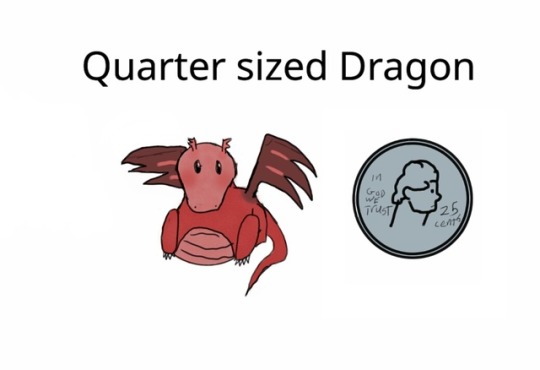
This idea came from a friend, in a conversation we had. Basically we were talking about how a lot of fantasy has giant dragons that the heroes fight, but what if there were a bunch of tiny, cute dragons?
0 notes
Photo
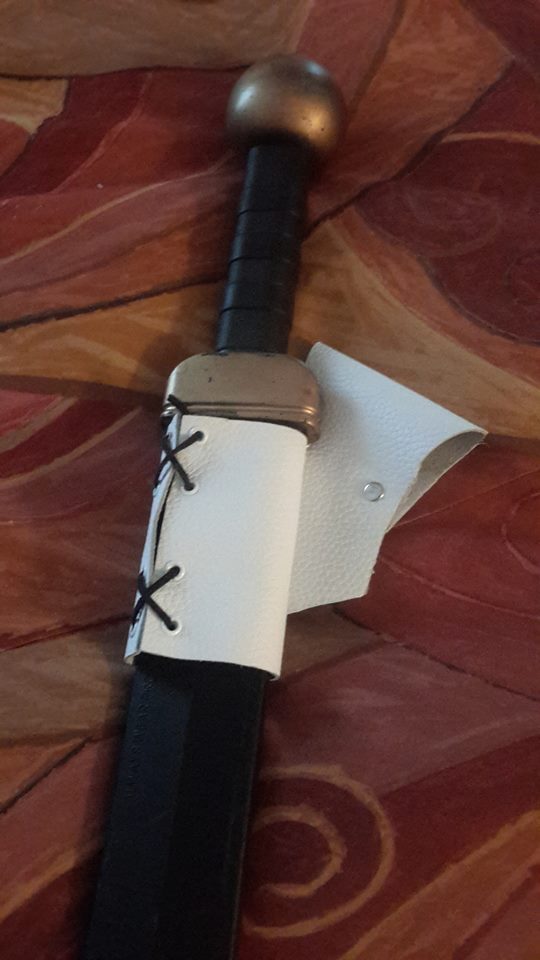
Made a sword frog today. It took me a couple hours, and I used stuff I already had, so It didn’t cost much.
2 notes
·
View notes
Photo
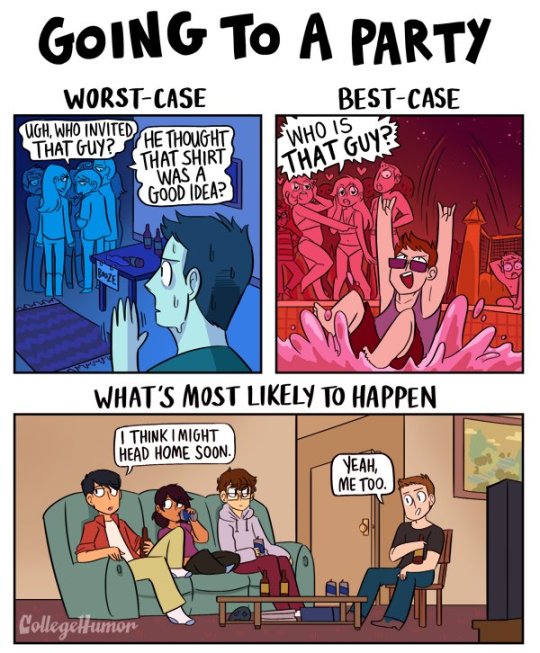

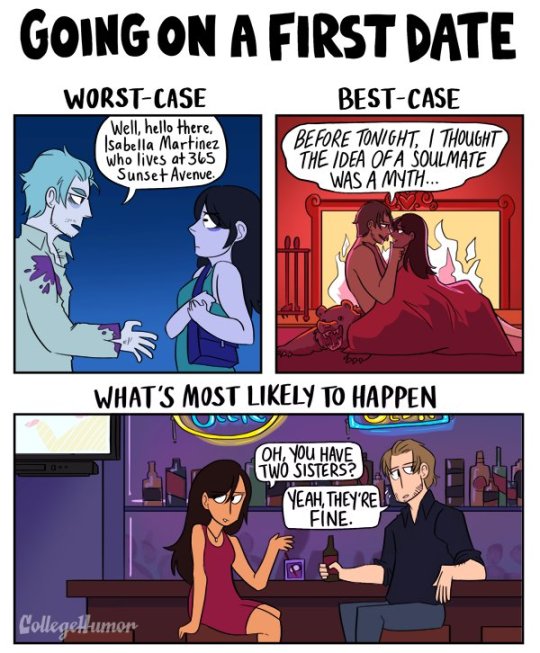

Worst Case vs. Best Case Scenarios by Karina Farek.
678K notes
·
View notes